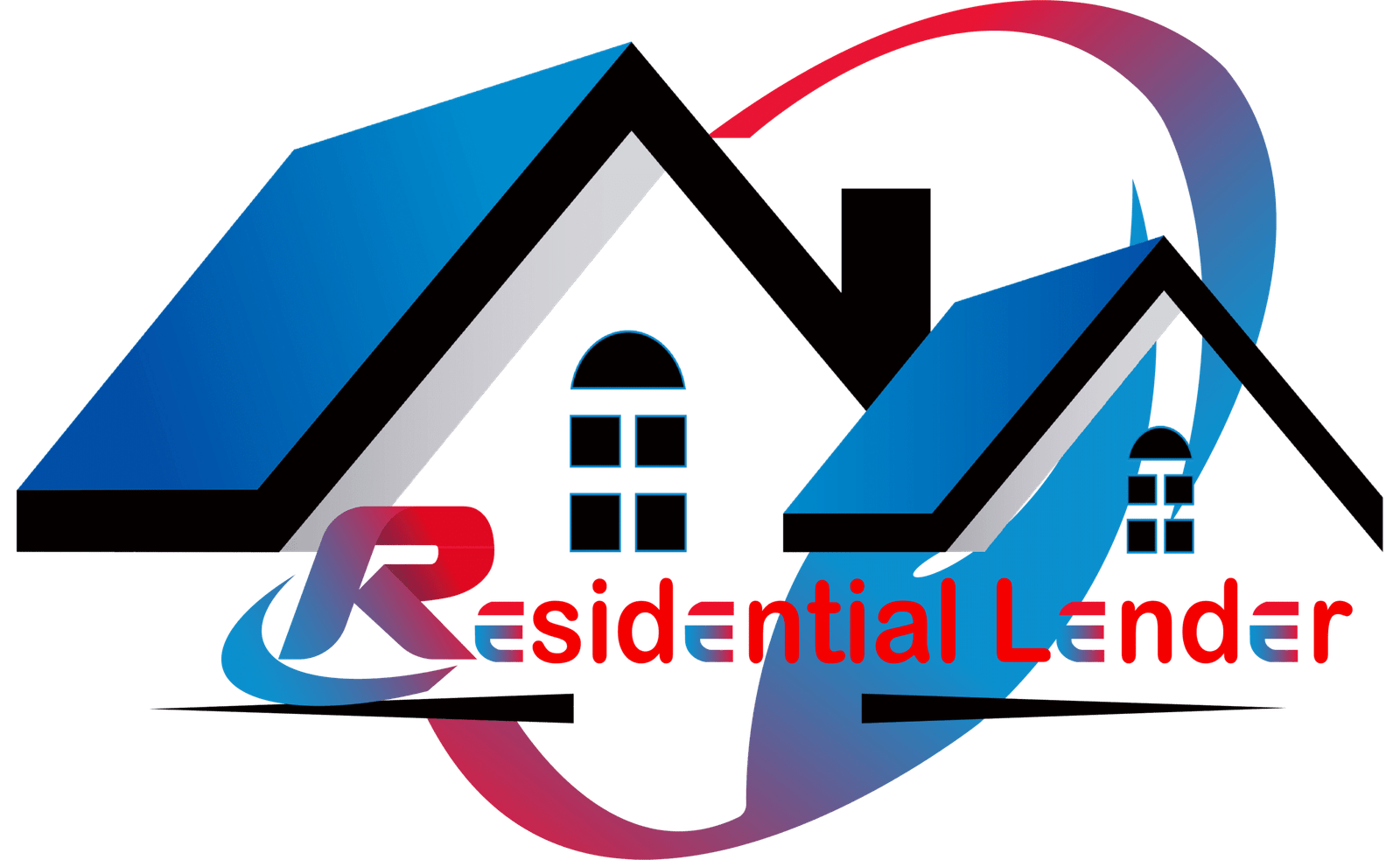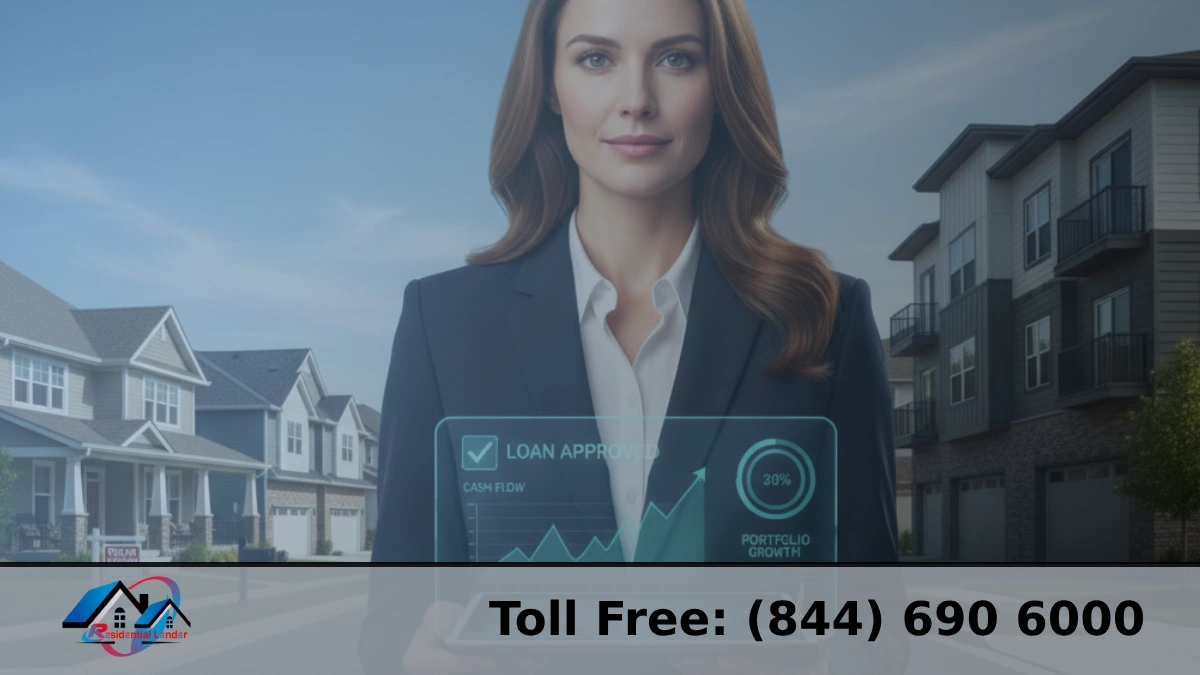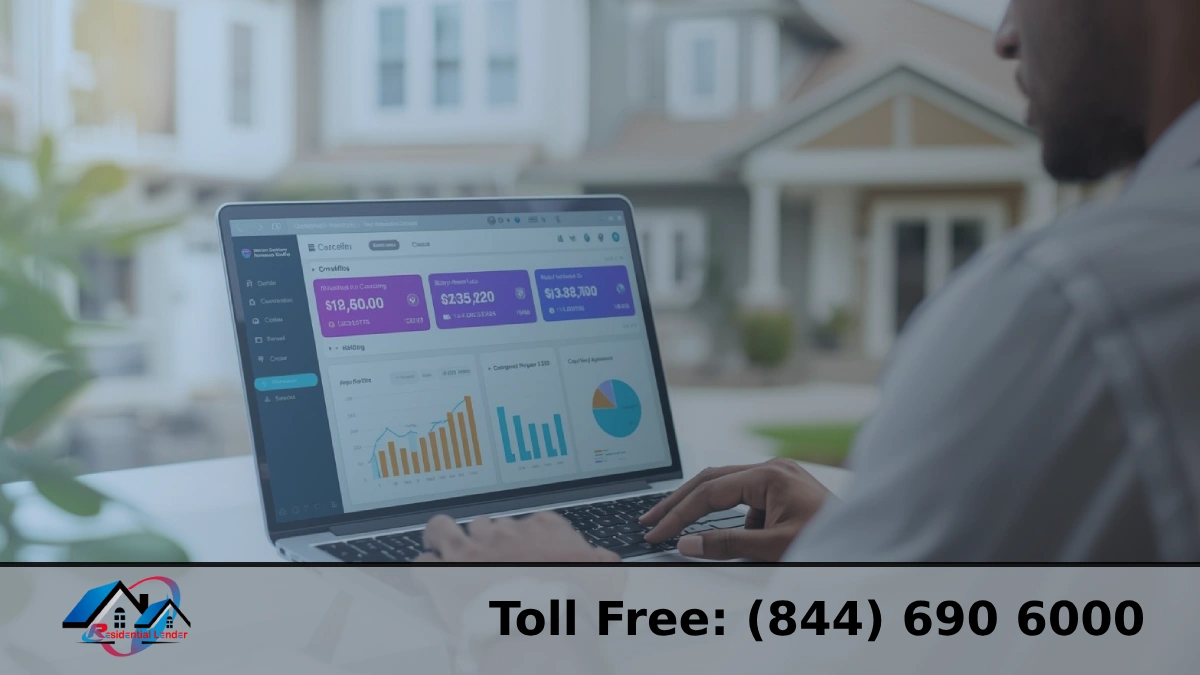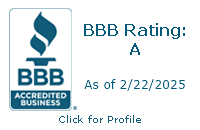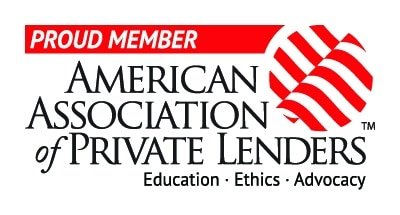Are you a real estate investor struggling to secure the right financing for your subsequent rental property acquisition? The conventional path is fraught with hurdles—steep 20-30% down payments, rigid reserve requirements, and a stack of red tape that can stop a deal in its tracks. It’s a relatable pain point that often forces investors to liquidate capital or settle for less-than-ideal terms.
There’s a persistent myth that the Small Business Administration (SBA) loan programs, like the popular SBA 7(a) or SBA 504, are strictly off-limits for real estate investments. While it’s true you cannot use these loans to purchase a property solely for rental or speculation—the primary mission is to support small businesses—there’s a crucial legal distinction that savvy investors are leveraging.
The value proposition lies in the owner-occupancy rule. An SBA loan can be used to purchase a commercial property where the applicant’s operating business will occupy at least 51% of the space. This is where the magic happens: you can rent out the remaining 49% (or up to 40% for new construction) to generate significant, ongoing rental income, effectively using a low-down-payment, long-term government-backed loan for a multi-use, income-producing asset! The SBA itself supported 103,000 financings to small businesses in Fiscal Year 2024, representing a total capital impact of $56 billion, according to the U.S. Small Business Administration’s 2024 Capital Impact Report—a clear indication of the program’s scale and reach.
At ResidentialLender.Net, we bring 30 years of underwriting experience and a robust network of 1,000+ private lenders, investors, brokers, and realtors to the table. We specialize in navigating these nuanced regulations to secure the most advantageous financing for you.
To help you move from confusion to certainty, this guide will break down the 7 Key Things you must know to implement this strategy successfully:
- Understanding the Owner-Occupancy Rule (The 51% Requirement)
- SBA 7(a) vs. SBA 504: Which is Best for Real Estate?
- The “Operating Business” Requirement
- Eligible Property Types (Commercial vs. Residential)
- Navigating Down Payments and Equity Injection
- Maximizing Rental Income on the Remaining Space
- The Application and Approval Process
Keep reading to unlock the secrets to securing an outstanding SBA loan for your investment strategy and turn that restrictive rule into your most significant financial advantage!
Decoding the SBA’s Main Rule: What Counts as Owner-Occupied for SBA Rental Property Loan?
To successfully use an SBA loan for an income-generating property, you must first address the main hurdle: the SBA’s focus on supporting operational small businesses, not passive investment.
What It Is: Business Over Investment
SBA loans, particularly the SBA 7(a) and SBA 504 programs, are designed to help small businesses acquire real estate that is integral to their operations. Simply put, you cannot use an SBA loan to purchase a property solely for the purpose of collecting rental income. That’s a passive investment, which the SBA prohibits.
The Key Occupancy Requirement
The entire strategy hinges on your operating business meeting the stringent owner-occupancy rule. This requirement defines how much of the property your business must actively use:
- Existing Property: Your business must occupy at least 51% of the total rentable square footage.
- New Construction: Your business must occupy at least 60% immediately upon completion, with a written plan to occupy up to 80% within a specified period (typically 10 years).
This rule ensures the loan’s primary purpose aligns with the SBA’s mission of empowering small business owners to own their commercial space. The U.S. Small Business Administration is clear in its guidelines: loans are for owner-occupied commercial real estate, a key distinction from conventional investment property loans.
The Rental Property Loophole
This 51% threshold creates a critical loophole in rental property. Because your business only needs to occupy just over half of an existing property, you are legally permitted to rent out the remaining up to 49% to tenants.
This rental income, while not the primary purpose of the loan, can serve as a powerful secondary income stream that can significantly offset your mortgage payments. This strategy works exceptionally well for:
- Mixed-Use Buildings: A retail business occupying the ground floor and leasing the apartments or offices above.
- Office Buildings: A professional services firm (e.g., accounting, legal) occupying the majority of one floor and renting out executive suites on the same or another floor.
Eligible vs. Ineligible Property Usage
| Usage Type | SBA Loan Eligibility | Description |
| Owner-Occupied Business | Eligible | Your core business occupies at least 51% (or 60% for new construction) of the space. |
| Generating Supplemental Income | Eligible | Renting out the excess 49% (or 40%) of the space to a third-party tenant. |
| Passive Investment Only | Ineligible | Purchasing a duplex or apartment building solely to generate rental income without an operating business on-site. |
| Speculative Real Estate | Ineligible | Buying property with the sole intent to resell it for a profit quickly. |
The key takeaway: You are purchasing a commercial property for your business, and the ability to rent the excess space is an allowable financial benefit, not the core reason for the loan.
Guide to SBA 7(a) Loan for Rental Property Investment vs. SBA 504 Loan
When pursuing an owner-occupied commercial property with an eye toward supplemental rental income, your primary choices are the SBA 7(a) and SBA 504 programs. Understanding the distinct structure and benefits of each is the key to minimizing your down payment and maximizing your financial leverage.
In Fiscal Year (FY) 2024, the SBA’s core programs collectively provided $37.8 billion in funding to small businesses—a clear indication of their vital role in financing business growth and real estate acquisition.
The SBA 7(a) Loan: The “Swiss Army Knife”
The 7(a) is the SBA’s most common and flexible loan, aptly named the “Swiss Army Knife” of small business financing.
- Maximum Loan Amount: Up to $5 million.
- Use Cases: It’s highly versatile, covering everything from real estate acquisition, construction, and renovation, to refinancing, equipment purchases, and even working capital.
- SBA loan for starting a rental property business: A small property management or real estate development firm could use a 7(a) to purchase a small office building. The firm occupies 51% of the space as its principal office (satisfying the owner-occupancy rule), and rents out the remaining 49% to other businesses, effectively using the loan to acquire an income-producing asset while financing its operations.
The SBA 504 Loan (CDC/504): The “Fixed Asset Specialist”
The 504 program is designed explicitly for major fixed asset purchases, making it an excellent option for large-scale real estate projects. It involves a three-party structure: the borrower, a traditional lender, and a Certified Development Company (CDC).
- Maximum Loan Amount: The CDC portion of the financing package goes up to $5.5 million (and higher for specific projects).
- Key Benefit: Its structure requires a remarkably low down payment from the borrower—often as low as 10%, which is significantly lower than most conventional commercial mortgages.
- SBA 504 loan for the purchase of a commercial rental property: Ideal for a growing manufacturing business building a large facility. The business occupies over 51% of the building, and the remaining space is leased to compatible vendors or suppliers. The low, fixed interest rate on the CDC portion of the loan provides long-term stability for a significant investment. The average 504 loan size in FY 2024 was approximately $1.1 million, demonstrating its popularity for larger projects.
Comparison of SBA 7(a) vs. SBA 504 for Real Estate
| Feature | SBA 7(a) Loan | SBA 504 Loan (CDC/504) |
| Max Loan Amount | $5 million | Up to $5.5 million (CDC portion) |
| Minimum Down Payment | Typically 10% (Varies by lender/use) | Typically 10% (Structured Financing) |
| Repayment Term | Up to 25 years for real estate | Up to 25 years (Fixed-rate portion) |
| Interest Rate | Variable (Tied to Prime Rate) or Fixed | Fixed (Tied to U.S. Treasury rates) |
| Use Flexibility | High (Real Estate, Working Capital, Equipment) | Low (Fixed Assets only – Real Estate & Equipment) |
Best SBA Loans for Real Estate Investors Rental Property: Strategy Meets Finance
The genius of using an SBA loan for income-producing real estate lies in finding the specific scenarios where the financial benefits of the SBA (low down payments, long terms) outweigh the restrictions of the owner-occupancy rule. This is where strategy meets finance to create high-leverage investment opportunities.
Illustrative Investment Scenarios
An SBA loan is the perfect fit when your business and your investment goals overlap. Consider these high-potential examples:
- Mixed-Use Properties: This is the ideal scenario. A retail clothing shop (your operating business) needs a store on a high-traffic street. You use the SBA 504 loan to buy a three-story building, occupy the entire ground-floor retail space, and the back-office mezzanine (over 51% of the square footage). You then rent out the two residential apartment units on the floors above to third-party tenants. The rent from the apartments becomes a powerful, supplemental income stream used to service the debt.
- Fix-and-Hold/Fix-and-Rent (Business Side): A general contracting, architectural, or property management firm is looking to purchase its permanent headquarters. They use an SBA loan to acquire a large, underutilized warehouse or office building. They occupy the necessary 51% for their business operations and use the remaining 49% to create flexible office suites or storage units to rent out to local small businesses. The real estate becomes a long-term asset, with secondary rental income contributing to the business’s overall revenue and growth.
- The Anchor Business: Think of service-based local companies: a daycare, a physical therapy clinic, or a neighborhood gym. These businesses frequently buy their own buildings using SBA financing. If their purchase includes extra space—like an unused second floor or a basement apartment—that space can be legally rented out for income, effectively financing the asset with superior terms.
SBA Loan vs. Conventional Loan for Rental Property
When the owner-occupancy requirement is met, the SBA loan provides a distinct financial advantage over a conventional commercial loan for real estate:
| Feature | SBA 7(a) or 504 (Owner-Occupied) | Conventional Investment Loan |
| Minimum Down Payment | As low as 10% (especially with SBA 504) | Typically 20% to 30% |
| Amortization Term | Up to 25 years (fully amortized) | Often 10-15 years (often with a balloon payment) |
| Loan-to-Value (LTV) | Can go up to 90% | Typically limited to 65% to 80% |
In short, meeting the owner-occupancy rule allows you to access low down payments and long, fixed-rate terms—the exact financial tools that maximize cash flow and liquidity for any real estate investor.
Maximum SBA Loan Amount for Rental Property Acquisition & Eligibility
Securing an SBA loan for an owner-occupied property with rental income requires strict adherence to eligibility requirements and a clear understanding of the financial limits. The ability to meet these requirements is what separates successful applicants from those who are declined.
Maximum Limits and Key Financial Requirements
The SBA sets limits based on the loan type, which directly impacts the scale of your real estate acquisition:
- SBA 7(a) Loan: The maximum loan amount is $5 million. This is the total amount, most of which must be allocated to the acquisition of owner-occupied property.
- SBA 504 Loan (CDC/504): The SBA portion of the loan (the second mortgage) can go up to $5 million, and up to $5.5 million for specific energy or manufacturing projects. Since the 504 is a three-party structure (bank, CDC, borrower), the total project cost can be much higher.
SBA Loan Requirements for Long-Term Rental Income
While your business’s ability to generate strong cash flow is paramount, the SBA also imposes specific size standards:
- For-Profit Business: Must be a for-profit enterprise, legally operating, and based in the U.S.
- Size Standards (504): Your business must have a tangible net worth of less than $20 million and an average net income (after federal income taxes) of less than $6.5 million for the two years preceding the application.
- Repayment Ability: Crucially, your business plan must demonstrate a strong ability to repay the loan from operating cash flow—with the secondary rental income serving as a supplement, not the sole means of repayment.
Personal and Business Underwriting
Lenders, like the network we work with at ResidentialLender.Net, perform rigorous underwriting beyond the SBA’s basic criteria:
- Personal Side: A personal credit score typically of 680 or higher is strongly preferred, along with a clean history (no recent defaults, bankruptcies, or federal debt delinquencies). All owners with a 20% or greater stake must provide a personal guarantee.
- Business Side: Lenders look for at least 2 years in business and a robust business plan demonstrating consistent revenue history. Your financial statements must be clear and complete.
Refinancing: Can I Use an SBA Loan to Refinance Rental Property?
The answer is Yes, but only if the property is owner-occupied commercial real estate.
You cannot use an SBA loan to refinance a purely passive investment property (such as a traditional rental home or an apartment complex).
However, you can use the SBA 504 Refinance Program and, in some cases, a 7(a) loan to refinance an existing commercial mortgage that was used to purchase or improve your owner-occupied business property. This is particularly attractive for:
- Rate & Term Refinance: Replacing a higher-rate or shorter-term conventional loan (like one with a balloon payment) with a long-term, fixed-rate SBA loan to improve cash flow.
- Debt Refinancing with Cash-Out: The SBA 504 program allows you to refinance an existing debt and cash out up to 20% of the property’s appraised value for working capital needs, further freeing up capital for business growth.
Documents Needed for SBA Rental Property Loan Application & How to Get an SBA Loan
The SBA loan application process, while comprehensive, is manageable when approached strategically. Its structure is designed to rigorously verify the three main pillars: your business’s ability to repay, your personal financial strength, and the real estate’s owner-occupied nature.
In 2023, approximately 59% of SBA loan applications were approved (either entirely or partially), demonstrating that a majority of small businesses successfully navigate this process.
Step-by-Step Guide to Securing Your SBA Loan
Develop a Rock-Solid Business Plan: The most crucial first step. This document must clearly articulate how the property meets the 51% owner-occupancy rule and how the business generates sufficient cash flow to service the debt before factoring in supplemental rental income.
SBA loan for short-term rental property Airbnb: If your business is a hospitality operation (e.g., an inn, boutique hotel, or a property management firm using the space as its primary office), the business plan must detail how the short-term rentals (Airbnb) are integral to the operating business, not a passive investment. The business must actively manage, staff, market, and run the facility.
Gather Comprehensive Financials: Organize these documents for a smooth submission. Missing or incomplete paperwork is the #1 cause of delays.
- Business Tax Returns: Full federal returns (including all schedules) for the last three years.
- Personal Tax Returns: Full federal returns for all owners with 20% or more ownership over the previous three years.
- Financial Statements: Current Profit & Loss (P&L) Statement and Balance Sheet (usually within 90 days of application).
- Debt Schedule: A detailed list of all existing business debts.
Owner/Personal Documentation:
- Personal Financial Statement (PFS): A detailed snapshot of all personal assets and liabilities.
- Resumes: Professional resumes for all principal owners to demonstrate management capability.
- Legal/Organizational Documents: Articles of Incorporation, Operating Agreements, and business licenses.
Choose the Right Lender: This is a make-or-break step. While large banks offer SBA loans, a specialized correspondent lender like ResidentialLender.Net is often your best bet. We access a network of lenders and bring 30 years of underwriting expertise to properly structure and package the loan to meet the SBA’s rigorous standards, significantly increasing your chances of a timely, successful approval.
Application and Underwriting: Once the package is assembled, the lender submits it. The underwriter’s role (our core expertise) is to rigorously vet the application, confirm all eligibility criteria (especially the 51% rule), and assess the risk before submitting the loan to the SBA for guarantee. This process typically takes 30–90 days from the time a complete funding application is submitted.
Pros and Cons of Using an SBA Loan for Rental Units
Leveraging an SBA loan for an owner-occupied property with rental units is a powerful financing strategy. Still, it’s essential to weigh the benefits against the program’s inherent restrictions. A balanced perspective helps you make the best financial decisions for your business and investment portfolio.
The Upside: Maximizing Financial Leverage (Pros)
The primary reason investors pursue the SBA loan for rental units strategy is the exceptional financial terms it offers compared to conventional commercial loans:
- Lower Down Payments: You can often secure financing with a down payment as low as 10% (especially with the SBA 504 program), which is significantly lower than the 20% to 30% required by most conventional commercial real estate lenders. This preserves your business capital.
- Longer Repayment Terms: SBA real estate loans (both 7(a) and 504) offer repayment terms of up to 25 years. This lengthy amortization period dramatically reduces your monthly payments, improving your business’s overall cash flow. Conventional loans often have shorter terms, sometimes with balloon payments.
- Competitive Rates: Because the loan is guaranteed by the federal government, lenders face reduced risk and can offer competitive, often lower, interest rates than for non-guaranteed conventional commercial loans.
The Downside: Navigating Restrictions (Cons)
The benefits come with distinct compliance and process challenges:
- Strict Owner-Occupancy Requirement: This is the biggest hurdle. The rigid requirement that your operating business must occupy at least 51% of the property makes pure passive investment ineligible. The deal must be structured around the business need, not the rental income (LSI Keyword: SBA loan eligibility for multi-family rental property).
- Lengthy Application & Approval Time: The thorough documentation and multi-stage review process (lender underwriting plus SBA review) typically result in a more extended closing period—often 60 to 90 days from the funding application. Conventional loans can sometimes close faster.
- SBA Guarantee Fees: The SBA charges a guarantee fee to the lender, which is typically passed on to the borrower as an upfront cost. For example, for a real estate loan over $1 million, the fee can be up to 3.50% of the guaranteed portion, adding to your closing costs.
The ResidentialLender.Net Difference
We specialize in mitigating these cons to deliver a seamless financing experience. With 30 years of underwriting expertise, we:
- Expedite the Process: By pre-packaging and structuring your application perfectly from the start, we minimize back-and-forth and significantly shorten the closing timeline compared to a traditional bank.
- Ensure Compliance: We specialize in finding creative, compliant ways to structure your deal to meet the 51% owner-occupancy rule, ensuring your multi-unit property purchase qualifies under the SBA guidelines.
Ready to leverage low down payments and long terms for your next owner-occupied, income-generating property? Contact us today to discuss your unique investment scenario!
Your Next Step: Secure Your Compliant SBA Real Estate Loan
We’ve broken down the complexities, revealing that while a direct, passive SBA loan for rental property is off-limits, an intelligent owner-occupancy strategy is the key to unlocking extraordinary financing.
Key Takeaways Recap
You now know the 7 Key Things to successfully navigate this process:
- The 51% Owner-Occupancy Rule is mandatory.
- The SBA 504 offers the lowest down payment (as low as 10%).
- Your business must be the primary borrower, with rental income being secondary.
- Mixed-use properties are the ideal target.
- Maximum loan limits reach $5 million to $5.5 million.
- The application demands a rock-solid business plan and organized financials.
- The pros (low down payment, long term) far outweigh the cons when structured correctly.
The Trust Factor: Why ResidentialLender.Net?
The difference between a “yes” and a “no” on your SBA loan for rental property application often comes down to how your business plan is structured and presented. With 30 years of underwriting experience and a vast network of 1,000+ private lenders and brokers, we specialize in finding compliant, creative ways to structure your deal to meet every SBA requirement. We don’t just find a lender; we see the absolute best fit with the highest likelihood of approval.
Don’t risk a rejection on a technicality. Ready to find a compliant and robust way to secure an SBA loan for your next investment?
Contact us today for a free, no-obligation consultation to structure your deal the right way.
FAQs
1. Does the 51% Owner-Occupancy Rule Apply Forever, or Can I Eventually Lease More Space?
The owner-occupancy rule is permanent for the life of the SBA loan. For an existing property, your operating business must maintain occupancy of at least 51% of the rentable square footage. For new construction, you must meet the 60% initial occupancy requirement and show a reasonable plan to reach 80% within ten years. If your business vacates the property or drops below the required percentage, you could be considered in default of the loan agreement, triggering penalties or requiring immediate action to become compliant.
2. Can an SBA loan be used to purchase a residential rental property, like a four-plex?
No. SBA loans cannot be used to purchase purely residential property, such as a duplex, four-plex, or apartment complex, even if the intent is to rent the units. SBA financing is strictly for owner-occupied commercial real estate. The only exception is if the property is a mixed-use building in which the commercial space (e.g., a ground-floor retail unit) makes up the majority of the square footage and is occupied by your operating business.
3. What collateral is required for an SBA real estate loan, besides the property itself?
For SBA loans over $500,000, the SBA requires the lender to take a lien on all available equity in personal real estate, including your primary residence and investment properties, if the equity is 25% or more of the fair market value. This is a crucial requirement to demonstrate that the business owners have “skin in the game.” Additionally, the lender will place a blanket lien on all business assets, such as equipment, inventory, and accounts receivable.
4. What are the typical closing costs for an SBA 504 loan, and can they be financed?
Closing costs for an SBA 504 loan are typically between 2% and 3% of the total project cost. These costs include various fees, such as the SBA guarantee fee, the CDC processing fee, legal expenses, and appraiser fees. A significant benefit of the 504 program is that most of these fees are added to and financed as part of the loan principal, so they are not typically required as out-of-pocket expenses at closing.
5. If I pay off my SBA loan early, are there prepayment penalties?
Yes, both SBA 7(a) and SBA 504 loans can have prepayment penalties, although they decline over time:
- SBA 7(a) Loans: A penalty only applies if the loan term is 15 years or more and you prepay 25% or more of the outstanding balance within the first three years. The penalty is typically 5% in year 1, 3% in year 2, and 1% in year 3.
- SBA 504 Loans: These always include a prepayment penalty that declines annually over the first 10 years of the loan’s term.
